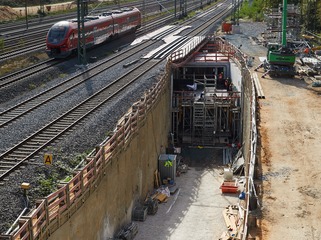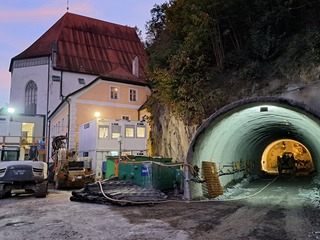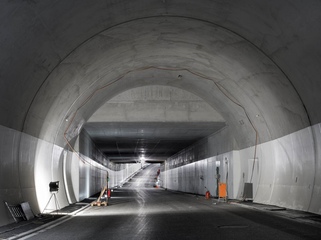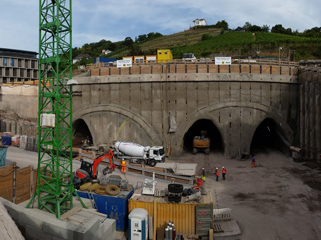Conventional Tunnelling
The construction of tunnels using conventional construction methods has always been a challenge to every engineer. Here, the engineer’s most important task is the evaluation of the geology and the selection of the right means of securing the excavation face until final completion of the inner lining. Wayss & Freytag already rose to this challenge in 1905 when building a railway tunnel using the conventional tunnelling method in Wasserburg/Inn in gompholite (Nagelfluh) and gravel.
The range of conventional tunnelling reaches from soft rock tunnelling (e. g. a metro tunnel in Munich gravel) and tunnelling in compressed air (e. g. Ostbahnhof metro station in Munich in Tertiary formations below groundwater) to classic drill and blast drives (e. g. Rennsteig Tunnel on the A 71 motorway, which, with a length of 8 km, is the longest motorway tunnel in Germany).
Related Projects

single-track railway tunnel with a widened section allowing the railway line to be split into 2 tracks, 14 trough blocks, 13 tunnel blocks, total length 353 m.

Foot and cycle path tunnel, length 114.77 m, max. clear width 6.45 m, clear height approx. 4.22 m.

95 m preliminary cut, preliminary cut approx. 35,000 m³ 30 m north portal structure 462 m tunnel constructed by the mining method: Top heading and bench/invert heading in Tertiary hilly terrain

6 km railway tunnel from Stuttgart central railway station to Bad Cannstatt as part of the large-scale project „Stuttgart 21“.
